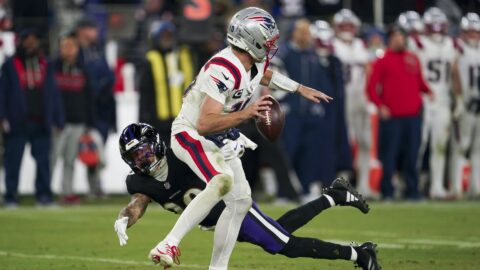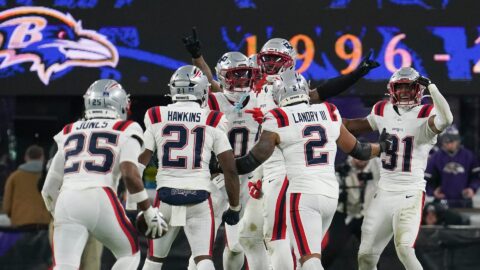The Bruins season is over.
What that usually means is that it’s time to start finger pointing, but not all fingers will be directed toward the B’s offense, defense, power play or bench — it will be at the officiating.
Joel Ward‘s game-winning goal comes with some question marks as it appeared as though Mike Knuble made contact with Tim Thomas before and while the puck trickled into the net. Should the goal have been disallowed?
Here’s how Thomas saw it: “[Knuble] put it at the net backhanded, and his momentum continued into me. I’m not calling sour grapes, but it’s reality and it pushed me out of the way just enough to open up the net for Ward to put it in. I didn’t even see Ward put it in. I knew the rebound was going that way but I had guys, well my head was probably in about his stomach.”
You be the judge. Here’s the complete rule, according to NHL.com:
69.1 Interference on the Goalkeeper – This rule is based on the premise that an attacking player’s position, whether inside or outside the crease, should not, by itself, determine whether a goal should be allowed or disallowed. In other words, goals scored while attacking players are standing in the crease may, in appropriate circumstances be allowed. Goals should be disallowed only if: (1) an attacking player, either by his positioning or by contact, impairs the goalkeeper’s ability to move freely within his crease or defend his goal; or (2) an attacking player initiates intentional or deliberate contact with a goalkeeper, inside or outside of his goal crease. Incidental contact with a goalkeeper will be permitted, and resulting goals allowed, when such contact is initiated outside of the goal crease, provided the attacking player has made a reasonable effort to avoid such contact. The rule will be enforced exclusively in accordance with the on-ice judgment of the Referee(s), and not by means of video replay or review.
For purposes of this rule, “contact,” whether incidental or otherwise, shall mean any contact that is made between or among a goalkeeper and attacking player(s), whether by means of a stick or any part of the body.
The overriding rationale of this rule is that a goalkeeper should have the ability to move freely within his goal crease without being hindered by the actions of an attacking player. If an attacking player enters the goal crease and, by his actions, impairs the goalkeeper’s ability to defend his goal, and a goal is scored, the goal will be disallowed.
If an attacking player has been pushed, shoved, or fouled by a defending player so as to cause him to come into contact with the goalkeeper, such contact will not be deemed contact initiated by the attacking player for purposes of this rule, provided the attacking player has made a reasonable effort to avoid such contact.
If a defending player has been pushed, shoved, or fouled by an attacking player so as to cause the defending player to come into contact with his own goalkeeper, such contact shall be deemed contact initiated by the attacking player for purposes of this rule, and if necessary a penalty assessed to the attacking player and if a goal is scored it would be disallowed.
Check out the video below and don’t forget to vote at the bottom of the blog.
Should officials have disallowed Joel Ward’s game-winning goal due to goalie interference?



